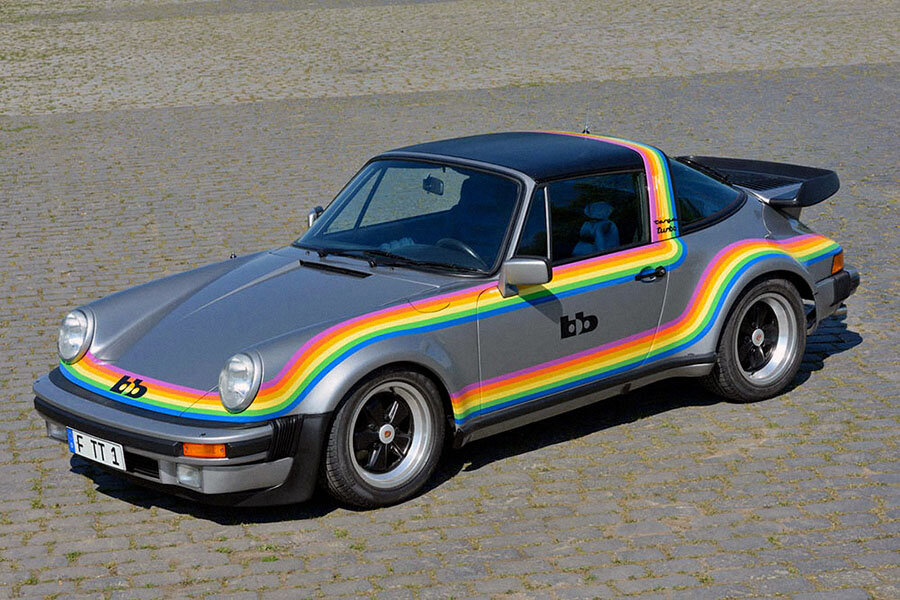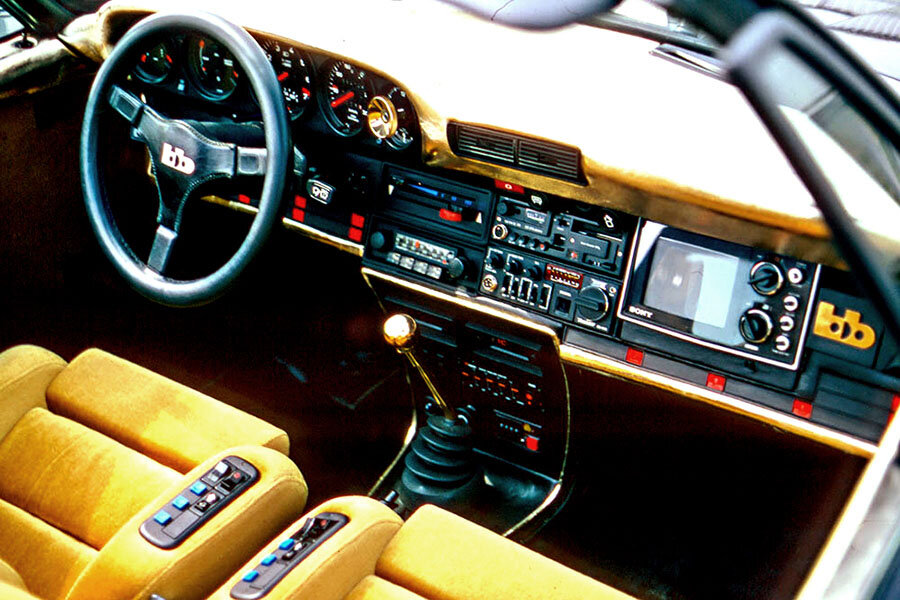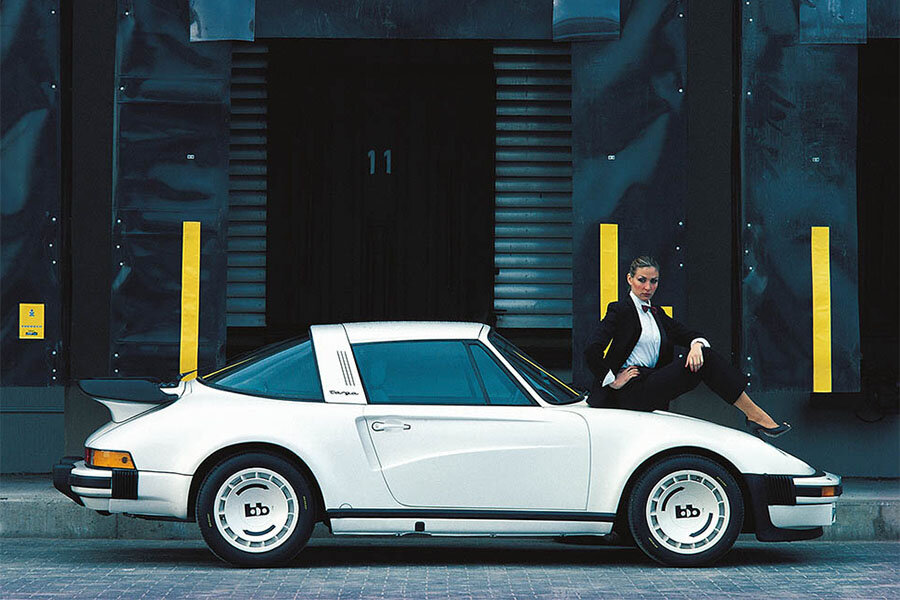Guide: BB Porsche 911 & 911 Turbo (930) - a Historical & Technical Appraisal
/BACKGROUND
BB was established in 1973 and initially based at an ex-BMW workshop in Frankfurt.
The firm’s custom body, paint, engine and interior programmes saw BB quickly establish itself as the premier destination for modified Porsches.
Founded by brothers Rainer and Dieter Buchmann, it was three years after the company was set up that it would come to international prominence.
The turbocharged Porsche 930 Coupe had been launched in February 1975, but Porsche did not intend to manufacture a Targa version principally because they believed demand for the Coupe would not greatly exceed the 400 units required for homologation into the Group 4 racing category.
BB 911-30 TURBO TARGA
Unexpectedly, the 930 was a commercial success and, in late 1976, BB launched their 911-30 Turbo Targa conversion.
The Turbo Targa programme cost DM68,000. It saw a donor 911 Targa (not included in the price) completely re-manufactured with genuine Turbo parts to include fenders, spoilers, suspension, brakes, fuel system and electrics.
The floorpan and roof were strengthened and a new Turbo engine and transmission were installed.
16-inch Fuchs wheels and Pirelli P7 tyres were also fitted.
What enhanced BB’s pioneering reputation were state-of-the-art electronic options and the enormous degree of personalisation afforded to customers - ticking every box could more than double the list price of a standard 930.
In many ways, BB’s bespoke tailoring programme picked up the slack left after the demise of traditional coachbuilders when inflexible mass production techniques meant truly individual creations all but disappeared.
Porsches that went through the BB workshop could be enhanced with a telephone mounted discreetly in the dash (DM18,000), Scheel sport seats (DM1000), electric windows (DM1800) and velvet upholstery (DM3000).
Combination Hi-Fis were also popular. The typical BB system used a Blaupunkt Berlin radio receiver, Uher cassette player, 16 Pioneer speakers and an amplifier (DM4400).
Fully equipped, the list price for a BB Turbo Targa conversion was in excess of DM100,000 plus of course the DM36,000 it cost for a brand new entry level 911 Targa donor.
Weight was 1335kg compared to 1210kg for the 930 Coupe.
Performance was only marginally affected: 0-62mph required 5.8 seconds and top speed was 153mph.
By the end of 1976, several Turbo Targas had been manufactured, one of which was the famous ‘Polaroid’ press car built as a rolling showcase for BB’s talents. This vehicle incorporated nearly all the available equipment and starred in the 1980 film “Car-Napping”.
Production continued throughout 1977 with more options becoming available. These included US-specification bumpers and a normally aspirated Super Carrera Targa that featured Turbo-style bodywork without the forced induction engine. Both were introduced in March 1977.
By June 1977, BB had completed a de-spoilered Turbo Targa and, in 1978, they offered the new 3.3-litre Turbo engine along with BBS rims.
BB 911-30-28 TURBO / TURBO TARGA
Once Porsche introduced the flat nose 935 racing car, it was inevitable that customers would start to request road-going 911s equipped with similar front-end styling. Alongside DP (who made lightweight shells for the Kremer racing team), BB were among the first companies to offer flat-nose bodywork.
Whereas DP housed the driving lights below the front bumper (just like the factory 935), BB installed retractable Porsche 928 units on the front wings. By doing so, they instantly created one of the most stunning custom cars of the late 1970s. The all-steel ‘28’ headlight conversion was available from May 1978 and in isolation cost DM7500.
By this time, the basic cost of a brand new Turbo Targa conversion with all bells and whistles including the latest 3.3-litre engine and 928 front styling was DM162,500. Included was a 370bhp motor with the boost turned up to 1.1bar.
Customers were of course able to select individual upgrades for their vehicles. BB now offered BBS alloy wheels with coloured centres and polished rims (DM3250), a large front oil cooler (DM4500) and limited-slip differential (DM850).
Interiors could be enhanced with leather-covered seats, dashboards and speakers plus velvet carpet throughout including the boot (DM3950). There was also an electric front seat option (DM2200) plus air-conditioning (DM2600) and a chilled bar mounted in the rear seat (DM1500).
Other enhancements included a Sony colour TV and amplifier (DM2650), Citizen 40-channel radio telephone with 150-watt amp (DM4000), a four speaker stereo (DM1300), digital clock and tachometer (DM1200) and an adjustable boost toggle with pressure display (DM2000).
Security-conscious buyers were able to specify an alarm (DM700), a safety deposit box connected to the alarm system (DM850) and even a concealed storage compartment for a pistol (DM380).
A rear wiper and heated electric mirrors were among the more prosaic upgrades available.
The first 911-30-28 Turbo Targa was ordered by Curacao casino owner, Ortega Ramirez, who requested BB install practically every conceivable option to his car. However, the further customisation afforded to this Midnight Black example (such as extensive gold plating plus monogrammed seats and floormats) forced the price up to an astonishing DM250,000.
The ‘28’ headlight conversion became one of BB’s most popular options and spawned a host of copycats from the many new firms that jumped on the super-tuning bandwagon. Even Porsche themselves offered a limited edition 965 Turbo S with 928-style headlights many years later.
More developments came on stream during the course of the next few months.
BB’s Targa version of the Porsche 928 debuted at the Frankfurt Motor Show in 1979.
At the same time, directionally slotted disc wheel trims designed to aid brake cooling were introduced. They were followed by a Wide Body option in 1980 which saw all four fenders and both doors re-shaped and made around 100mm wider on each side. When specified, re-profiled door skins housed a prominent Ferrari-style engine intake. The Targa roof option got a T-bar to increase rigidity.
DINFOS
Soon afterwards, BB’s state of the art digital information system (DINFOS) was launched. Functions such as engine revs, speed and oil and water temperatures were displayed on the fascia in red LEDs. A computer mounted on the centre console could record anything from acceleration time, fuel consumption, average speed, time spent waiting at traffic lights and more.
Famously, Walter Wolf had the last of his custom Lamborghini Countachs equipped with DINFOS.
By the early 1980s, BB began to focus increasingly on Mercedes-Benz. The firm also tried to break into the mainstream market with Volkswagen.
Precisely how many 911-based conversions were completed before BB went out of business in 1986 remains unknown.
The bulk of production was split between Europe and the Middle East.
Text copyright: Supercar Nostalgia
Photo Copyright: BB
















